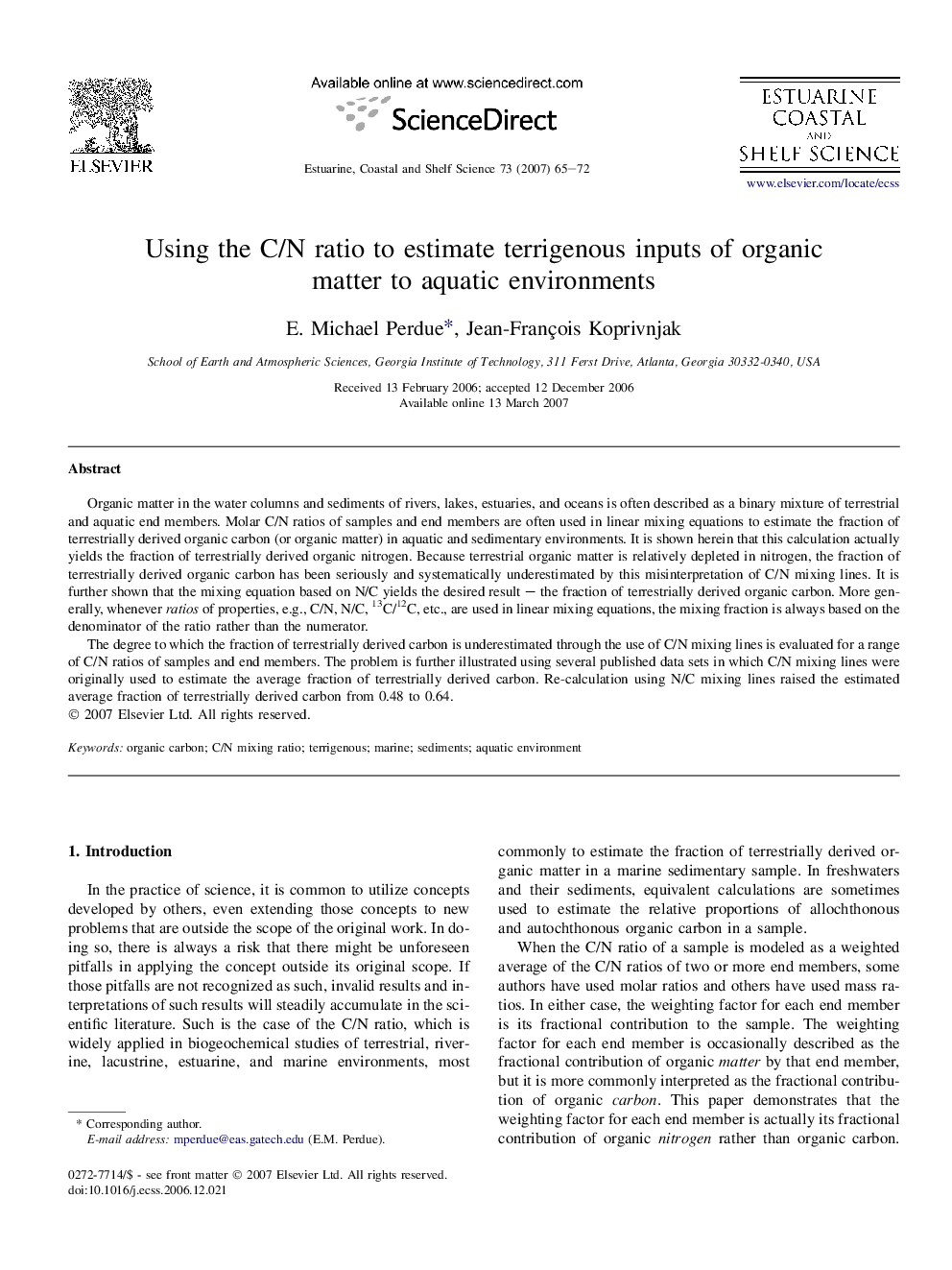| Article ID | Journal | Published Year | Pages | File Type |
|---|---|---|---|---|
| 4541960 | Estuarine, Coastal and Shelf Science | 2007 | 8 Pages |
Organic matter in the water columns and sediments of rivers, lakes, estuaries, and oceans is often described as a binary mixture of terrestrial and aquatic end members. Molar C/N ratios of samples and end members are often used in linear mixing equations to estimate the fraction of terrestrially derived organic carbon (or organic matter) in aquatic and sedimentary environments. It is shown herein that this calculation actually yields the fraction of terrestrially derived organic nitrogen. Because terrestrial organic matter is relatively depleted in nitrogen, the fraction of terrestrially derived organic carbon has been seriously and systematically underestimated by this misinterpretation of C/N mixing lines. It is further shown that the mixing equation based on N/C yields the desired result – the fraction of terrestrially derived organic carbon. More generally, whenever ratios of properties, e.g., C/N, N/C, 13C/12C, etc., are used in linear mixing equations, the mixing fraction is always based on the denominator of the ratio rather than the numerator.The degree to which the fraction of terrestrially derived carbon is underestimated through the use of C/N mixing lines is evaluated for a range of C/N ratios of samples and end members. The problem is further illustrated using several published data sets in which C/N mixing lines were originally used to estimate the average fraction of terrestrially derived carbon. Re-calculation using N/C mixing lines raised the estimated average fraction of terrestrially derived carbon from 0.48 to 0.64.
